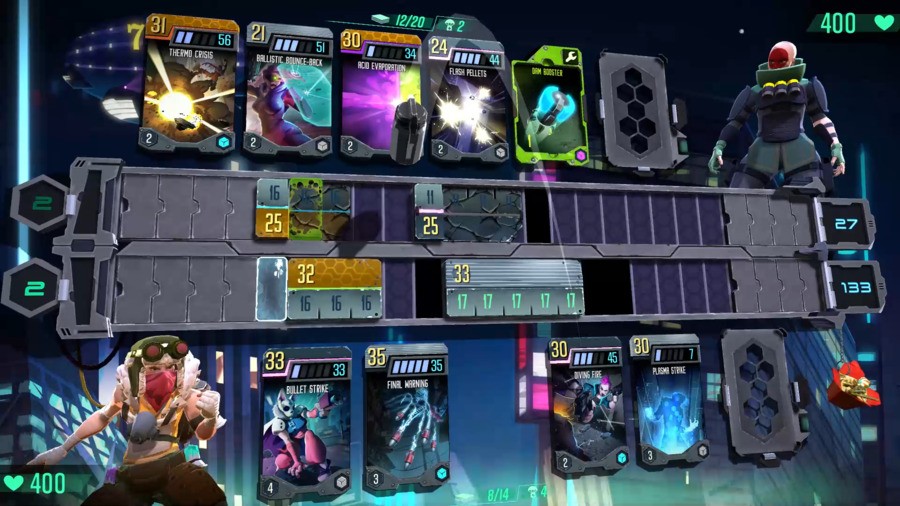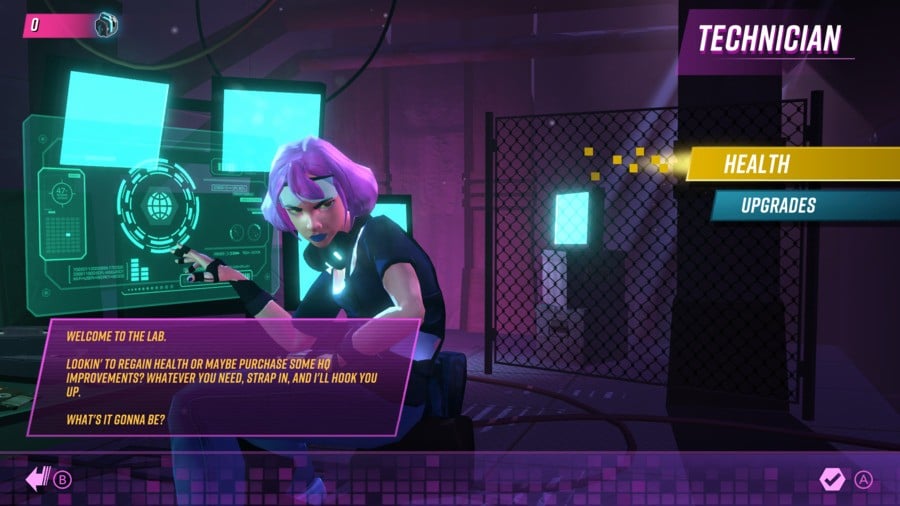
In May we shared a tease from developer Mojo Bones for its next release, Chrono Faction. Heading to Switch, it'll be the studio's first project on Nintendo hardware since the enjoyable Siesta Fiesta on 3DS way back in 2013. It's a very different game, however, as it's a CCG (collectible card game) with both solo and multiplayer modes, and it'll also be a premium release featuring "no micro-transactions or F2P mechanics".
We posed a few questions to the studio's Stuart Ryall to learn more about what to expect, and there's also a reveal trailer showing off the game's style and approach to the CCG genre.
Take a look below.
This looks like a bit of a different take on card-based / deck battling, but with a shared 'timeline' in which attacks and moves are made by both sides. Is that right, or if not can you tell us about the core gameplay approach to the battles?
Chrono Faction differs from other CCGs in that it features a central battlefield/track for placing attacks. Physical space becomes key, a bit like a puzzle game. The scrolling timeline aspect – where attacks get triggered in a linear fashion – also requires you to think about placement. For example, triggering a Med-Bot at the start of the track lets you regain health before the enemy has a chance to deal their Damage. Finally, both player’s hands are visible on-screen which makes reacting to your opponent’s cards a key strategy.
There are plenty of numbers on the battlefield, and actions can also affect the board, can you talk us through some of these aspects?
The core rules are actually very accessible. Each attack card has a yellow Accuracy value (indicating strength). Place a higher Accuracy attack opposite an opponent’s to shatter it. The blue values (Damage) get stored at the end of the track, ready to be unleashed in the Combat Phase (where attacks are triggered). Attacks also come in different lengths (Durations) so you also have to plan/consider physical space and fitting your moves onto the track (you might have a particularly powerful attack that just won’t fit).

In terms of attacks we have 3 types. Standard cards allow the player to build their Faction Power gauge for protection. Advanced cards are powerful if used in specific ways. For example, we have an Advanced card that needs to be connected to the end of the track to receive its buff, another gets a bonus when placed opposite a gap. Finally we have Critical attacks. These cards trigger special abilities in the form of Acid, Poison, Cryo, Thermo and Shock. There are many Critical effects, all designed to affect the battle in interesting ways. For example: spawn an ice block on your opponent’s track to restrict placement, or poison your enemy to reduce their turn counter.
We have over 145 cards spread across 5 categories.
Is this a game where you're steadily improving and accumulating your 'deck' and gear with each playthrough, or do you reset and start afresh each time?
The main single-player mode – called City Run – sees you choosing a Faction and then trying to reach the end of the Shadow District. Inspired by the Roguelike genre, the city map is procedurally generated, randomising node and difficulty on each run. You start the game with a set of 20 cards – a Starter Deck of sorts – and as you move through the city you’ll upgrade existing cards and acquire new ones, giving you more options for future runs. Chrono Faction also features Weapons and Charms. Weapons add modifiers to certain attack cards (great for boosting specific deck designs), and Charms provide unique perks for the battle. The combination of your Deck, Gun and Charm get placed in your own Combat Case where their combined effects can be assessed.

The trailer gives us a glimpse of the Technician, is there anything you can share about that at this stage?
You’ll acquire currencies as you move through the city in the form of Credits and Cells. Credits can be spent at the Trader to buy new cards and upgrade existing ones. The game also features Utility cards which introduce fun gadgets like grenades that can draw a new hand, or a grappling hook that steals an opponent’s card. Importantly, these Utilities are consumable so you’ll need to keep your supply topped-up via the Trader. Cells are spent at the Technician. You can purchase health from her, or buy persistent Faction Upgrades. These upgrades aid future runs, making your Faction more powerful over time.
City Run also features District Stats that revolve around Enemy, Economy and Luck values. These stats keep every playthrough dynamic by affecting things like Trader prices/stock and the rewards you gain from defeating enemies. You might decide to search a dumpster in one of the game’s Events and see your Luck fall as a result of an bad outcome, or perhaps you’ll defeat a tough enemy and see particular enemy types become weaker across the city. City Run also features other elements like interactive Dilemmas; Faction Leaders and a unique dice mini-game called Bokushi. Everything is designed to make players carefully consider their route through the city and keep their journey fresh.
Everything is designed to make players carefully consider their route through the city and keep their journey fresh.
Beyond solo runs through the campaign, is multiplayer going to be a focus in this game, and are you able to discuss whether this will be local and / or online?
Multiplayer is a big focus. We have a competitive mode called City War that pits you against other players across the globe. As you win battles you’ll earn XP and level-up your account (earning new rewards that will give you more combat options). City War features a central crime database that shows a list of the city’s most wanted players. Your Bounty acts as a score – directly tied to your performance – which is displayed as a global rank.
Another key aspect of Chrono Faction’s design is local multiplayer. Because of the game’s unique design – where both player’s hands are always visible – battles can be played via a single-screen. This is a perfect fit for the Nintendo Switch’s different configurations. Play on-the-go in handheld mode with two Joy-Cons or battle together on the TV. It’s designed to adapt to any situation which is a great thing for general VS play.
We'd like to thank Stuart Ryall of Mojo Bones for his time. If you'd like to register your interest in the game and keep up-to-date with news on the project, visit www.chronofaction.com





Comments 10
Card game? Sign me up
Ok this looks really fun, I didn’t notice a release date, but hopefully it releases soon.
I read the title starting with Chrono and felt a shiver up and down my spine. In vain, of course
Naming your game "Chrono"-something doesn't really feel right....though of course, the word isn't owned by Square or anything.
Kinda sad that we have come to a point where 'no additional micro-transactions' is a legitimate selling point of a new game.
@acNewUpdates That’s our bad. It’s definitely not intended as a selling point. I think we were worried people would read about purchasing new cards and assume there were shady F2P mechanics involved.
This looks very interesting. Colour me intrigued.
@MojoBones To be fair with it being a card game the first question will always be does it have micro transactions. The trailer also has a gacha machine which again could mean microtransactions. I am glad you have been transparent about it.
Ugly as sin, but the mechanics look dope, and no MTX or F2P is a major plus. Definitely will keep an eye on.
Looks great 👍🏼 can’t wait
Tap here to load 10 comments
Leave A Comment
Hold on there, you need to login to post a comment...